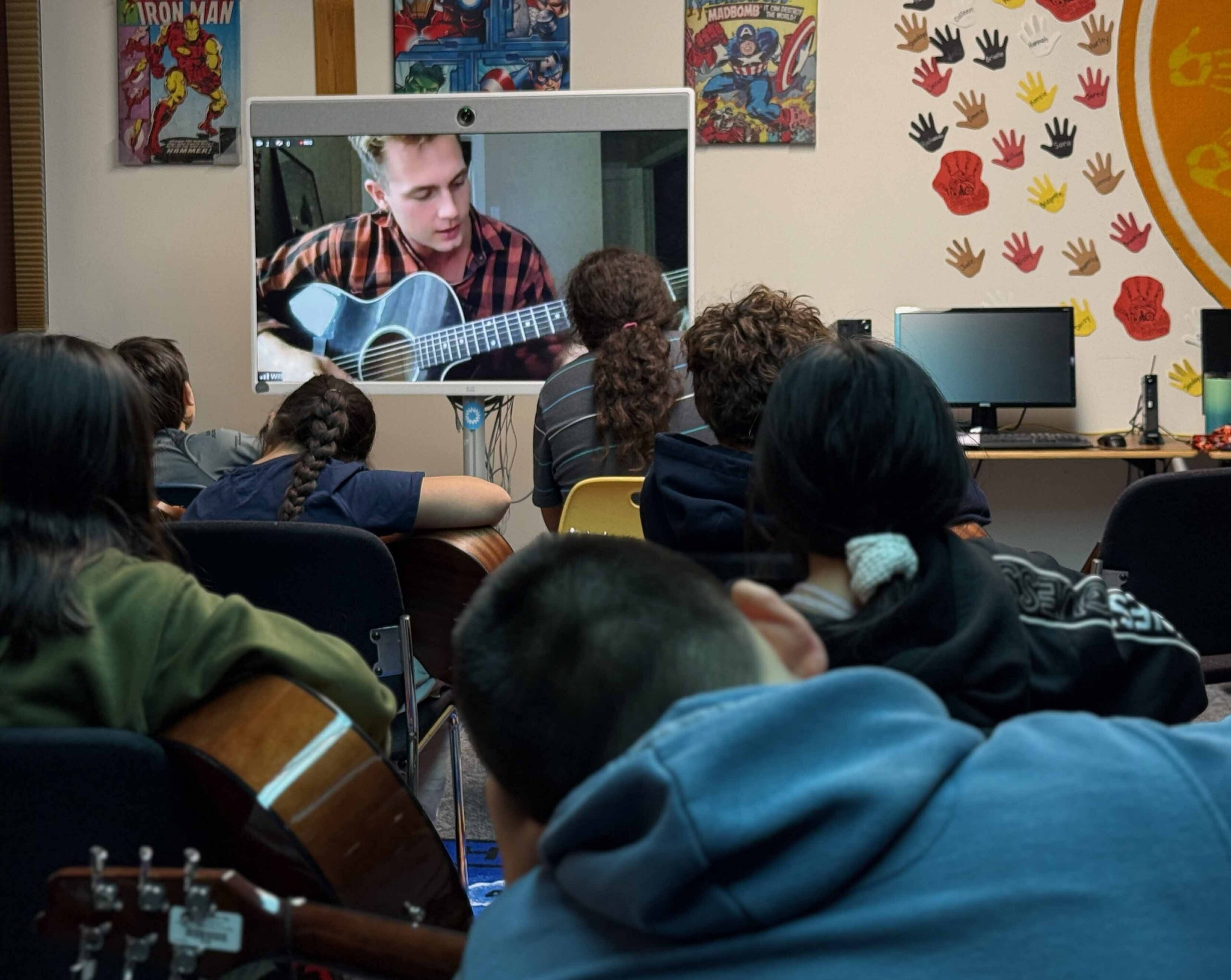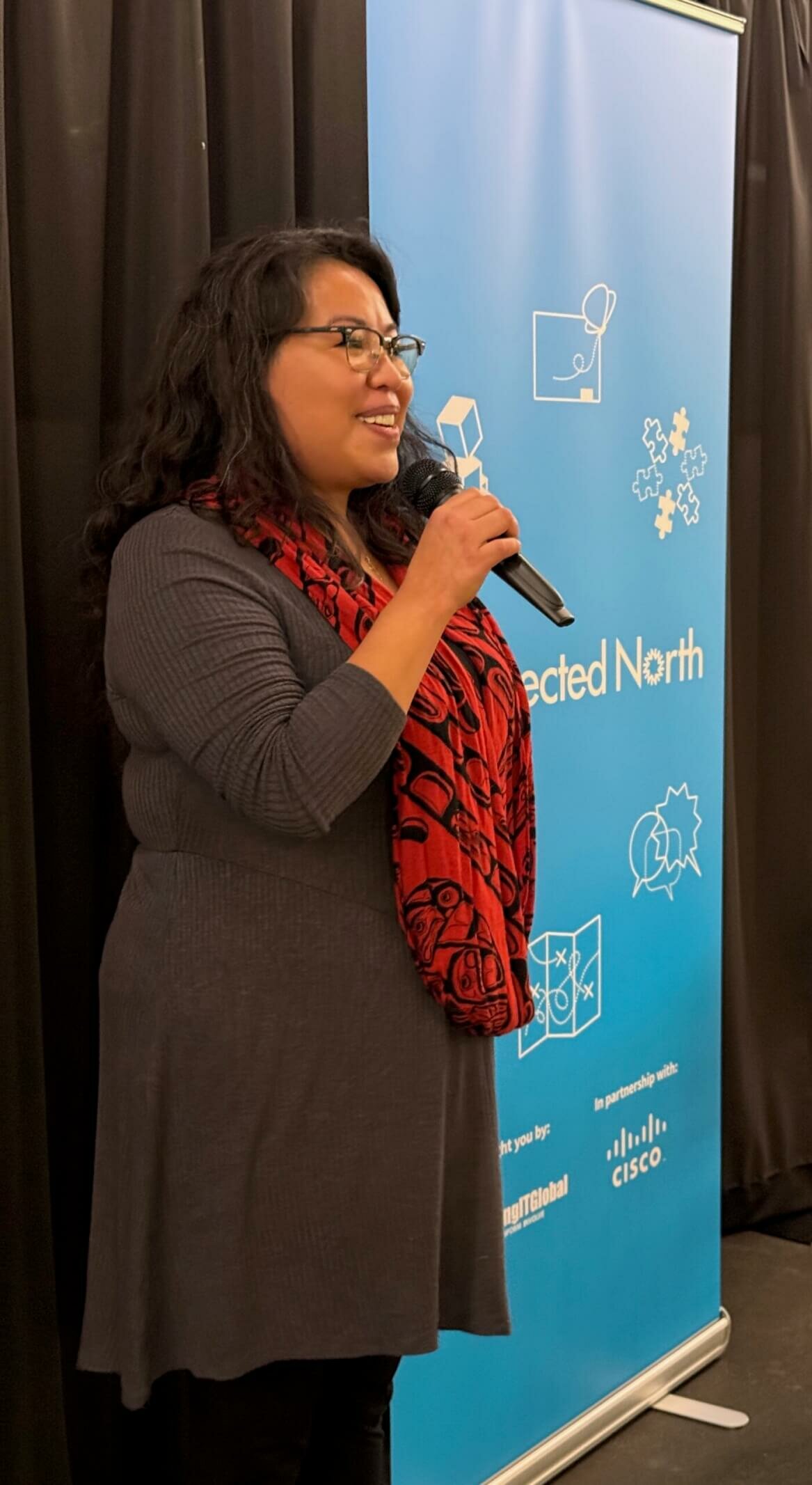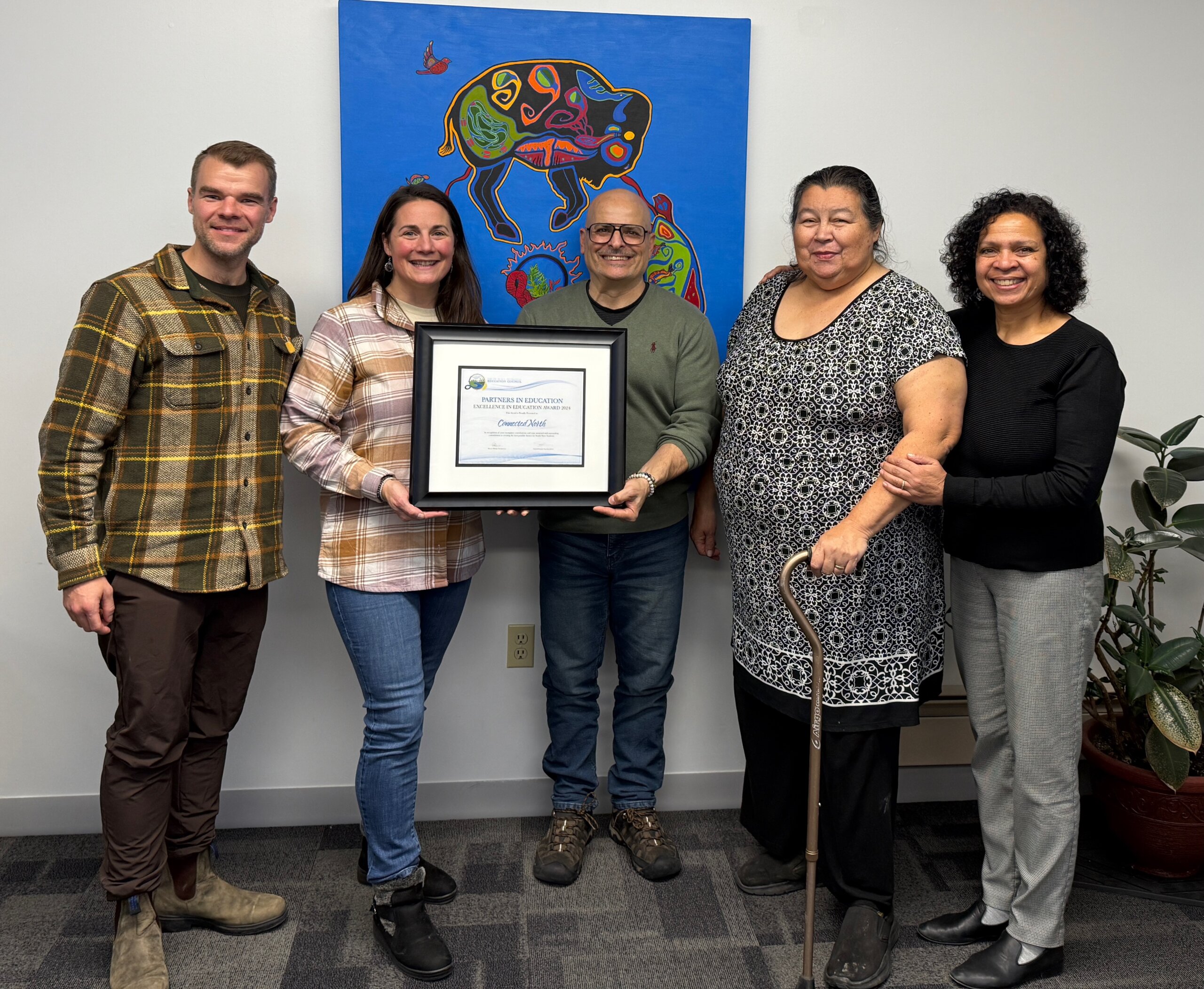Being an educator is a tough job no matter where you are, but there are unique challenges in the Northwest Territories. Eileen Beaver first became a language teacher in Fort Smith nearly forty years ago in the NWT’s South Slave region, though that wasn’t her official role. “When I first started as a language teacher, it was a special needs position because they didn’t have funding for language teachers,” Beaver recalls.
Beaver has dedicated much of her life to the revival and revitalization of the Dene language, spoken in Canada’s Northwest and one of NWT’s nine official Aboriginal languages. When she was eventually hired at Paul William Kaeser High School in Fort Smith, Beaver made it her priority to find creative ways to reach students struggling with the material. “I did a lot of cultural activities,” Beaver says, “and we introduced a lot of cultural inclusion programs.” A big, open fireplace and teepee out front became a great resource not just for language teachers at the school but also to help get kids out of the classroom and engage with their environment.
Making such educational opportunities real takes creativity and resources, which can sometimes be hard to come by. When one principal put Beaver in charge of their culture and language budget, she discovered she didn’t have much to work with; about $5,000 were devoted to each language of study. To make her program work, she sought extra help from third parties, including local companies who donated canoes for outdoor excursions, thus connecting students with the gorgeous land and culture surrounding them. Beaver has also worked with Connected North, an organization using interconnected and immersive technology to offer interactive virtual learning experiences to students in the North. Both a content creator for Connected North and an Elder-in-residence, Beaver has seen the unique benefits of technology in aiding educators in South Slave.
Beaver has found that students are more likely to show up to class when a Connected North program is scheduled. “Students are coming to school because there’s something new happening,” she says. It’s easy to understand why, given the way the technology opens up the world for kids in otherwise very isolated communities. From their classrooms in the NWT, students can now visit museums in Toronto and meet teachers, artists, and others from communities nationwide. “You’re enriching an individual student’s mind to say, ‘Yeah, I could do that,’” Beaver says.

A Connected North music session
Inspiring students is important work, particularly in the NWT, where the most recent government report on education found a 59 percent high school graduation rate, up 4 percent from the previous year but still well below the national average of 84 percent. The report also noted the adverse effects in recent years of both the COVID-19 pandemic and wildfires in the NWT, which have disrupted education for cohorts of students.
There are eight schools spread out across five communities in the South Slave region, with approximately 1,100 students and a little over 200 educators working, the majority of which are in regional centres Fort Smith and Hay River. Hundreds of kilometres separate many of these communities, including Łutsëlk’e—a fly-in community of about 300 people accessible primarily by air. With a budget of just under $25 million, the regional school board spends roughly $22,500 per student, which is a higher rate than the $15,702 per student spent in Ontario, but under more trying conditions. Along with spanning vast distances to serve smaller, less dense communities, the costs for most goods in the NWT are higher, and so are salaries to entice educators from around the country to the remote region.
One such educator is Souhail Soujah, superintendent of the South Slave Divisional Education Council, the region’s school board. Originally from Beirut, Lebanon, Soujah has worked all over Canada, including British Columbia and Yukon, where he served six years as a principal superintendent. “It is often difficult to get quality education to remote areas, because of the cost or because of circumstances,” Soujah says. However, he adds that resources are still plentiful for educators in the North, especially when taking into account the resourcefulness of great teachers.
In some ways, the challenges faced by South Slave are a little different from any other part of the country. “Education is not a silo. Schools are no longer just buildings that dispense academic knowledge. Now, they become social service buildings, justice buildings, food banks. They’ve become emotional, social support, health,” Soujah says. “We’ve become the panacea, if you will, to solve all ills, and we can’t do that alone. We need help. We need help from the government. We need help from NGOs. We need help from third parties.” Working with Connected North has been a boon, he says. “Through their systems, we are able to bring opportunities to remote schools, whether it be communication or conversations with people of merit or people of interest to the students, or learning crafts, or skills, or language, or music.”

Kristielyn Jones teaching at a Connected North event
Kristielyn Jones is an Indigenous professional counselor in Yellowknife and has also been a content creator for Connected North, recruited initially as a ukulele player. With her counselling background, Jones has led virtual psycho-educational workshops and a youth empowerment series. “The youth, I find, have it the hardest,” Jones says. “They go through so many changes all at the same time.” Through her work with Connected North, Jones can now reach kids in remote Arctic communities she otherwise wouldn’t be able to visit, helping her deliver workshops on important issues of emotional regulation and self-care. As a recovering addict, Jones has sought to bring the skills she’s learned on the road to recovery to students who may be facing similar issues in their lives.
Jones brings the medicine wheel teaching tool, common in some Indigenous communities, and trauma-informed teaching to her workshops with students. “We cultivated this space where we can have an exploratory conversation around trauma and anxiety,” she explains. “That’s how we build resilience, is through developing coping skills.” Using the virtual tools now at her disposal, Jones can also help connect students across the region, forming tighter cultural bonds and a more assured sense of identity. “After COVID, it’s helped to create those connections, regardless of distance,” Jones says. “Connected North offers this window of brightness and this sunshine for kiddos to
A connected north
The Connected North program recently received the Partners in Excellence Award from superintendent Soujah on behalf of the South Slave Divisional Education Council. Executive director of TakingITGlobal and the Connected North program Jennifer Corriero says, “It is so meaningful for our team and network of content providers and supporters to receive this recognition as it highlights the significance of community partnerships and our role in surrounding the students, teachers, and community members with uplifting resources to strengthen learning opportunities in schools.”

Left to Right: Jayson Moore, Jennifer Corriero, Souhail Soujah, Eileen Beaver, Cora America
The technology Connected North provides has also been beneficial to teachers accessing professional development opportunities at a fraction of the cost of flying in experts. However, Soujah also makes clear that in the end, it’s the quality of the educators that matters most, and attracting teachers to the North has become difficult in recent decades. Other jurisdictions in Canada have become more competitive on salary, while the UN has issued an alert over a global teacher shortage. Despite the challenges, Soujah is bullish on Canada’s North. “The North is beautiful in its own right, in its own way, and people need to experience it at least once,” he says. “And the North offers the experience of working with Indigenous communities, which to me is critical for understanding each other and for national unity.”
For Beaver, connecting with students in far-flung places has also proven essential for getting students excited about fostering a strong community in the North. Speaking of students she’s worked with, Beaver says, “I noticed they became renewable resource officers or they work with the parks.” She recalls one student she worked with who went to Saskatchewan for medical school and then returned to the NWT to work as a surgeon in Yellowknife. That’s what makes the work so fulfilling for Beaver in the end. “I love planting seeds.”
VISIT CONNECTEDNORTH.ORG FOR MORE INFO





